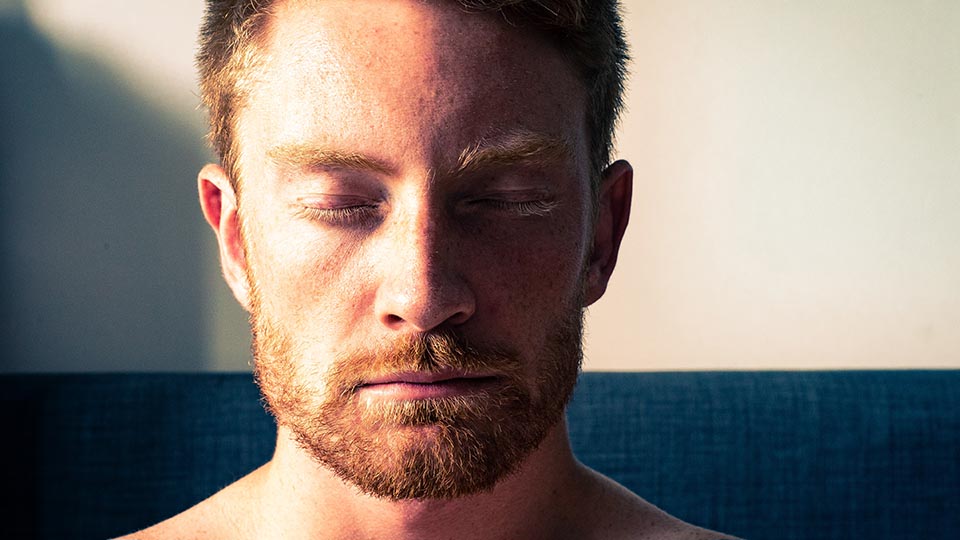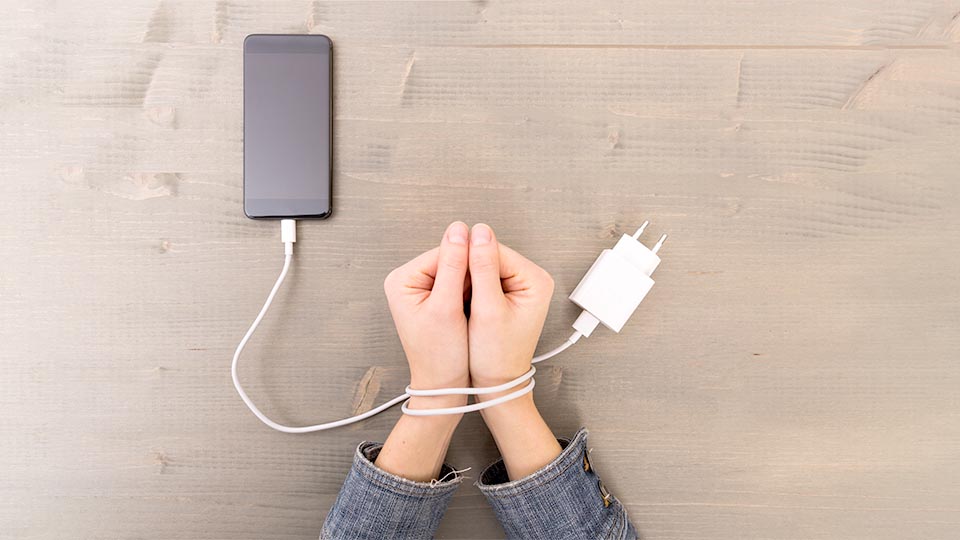This article was originally published on Flowertown, and appears here with permission.
I am neither a Buddhist monk nor a Western psychologist. I haven’t spent any time studying the neurological benefits of meditation, nor spent countless days deep in a trance-like state on a remote Zen monastery. I will not claim to offer any authoritative expertise on the ancient practice meditation.
However, just because I’m no expert doesn’t mean I haven’t benefited tremendously from meditation. My journey started two years ago, when I began practicing a very simple mantra meditation. What started with 20 minutes a day grew into a profoundly transformative practice that allowed me to overcome my anxiety and depression.
So, while I will not try to offer objective truths about meditation, I can provide my account of how it changed my life, and the important role that cannabis played in my journey.

Getting started
Before I got into meditation, it seemed to me like a strange, abstract, esoteric thing reserved for Tibetan monks: far too complex or deep for a Westerner, with little knowledge of Eastern religions, to comprehend. So I never really bothered to learn more.
It wasn’t until I began to suffer from alarmingly increasing anxiety and depression that I felt compelled to research meditation as a potential remedy to my mental health problems.
After watching some basic YouTube tutorials, I found an accessible entry point into the practice: a mantra meditation. I was shocked at how simple it was. These were the basic instructions:
- Sit comfortably with your back straight to ensure you don’t get tired.
- Close your eyes
- Inhale deeply, focusing on the breath
- Exhale deeply, silently thinking the mantra
- Repeat for 20 minutes at least once per day.
What is the mantra?
Essentially, the mantra is a word or phrase that you repeat to keep from getting absorbed in an involuntary thinking pattern. For me, the mantra served as an anchor.
While some like to meditate on a mantra that means something to them (like love or peace), the one I began to use was a (to me) meaningless word, pronounced “shiring”. I got it from a friend, who had received it from a transcendental medication guru. Of course, it could’ve been any word.
As my mind wandered, filled with random thoughts, I kept silently repeating the mantra on my exhaled breath to break my involuntary thought patterns, and anchor back into the present moment.
Through this simple practice, rather than being consumed by my stream of consciousness, I began to observe it. I started to understand thinking patterns and how my mind worked, which resulted in less of an emotional response to my thinking mind (my ego), even when I was not meditating. Of course, thoughts would pop into my head — but rather than follow them like I was accustomed to doing, I began the practice of breaking involuntary thinking patterns for the first time in my life.

Simple, not easy
Just because meditation is a simple practice doesn’t mean it is easy. Enjoying its profound benefits takes time. For me, getting through the first few months was excruciatingly boring, even painful at times.
Unfortunately, I believe that meditation is harder for people to get into than ever before — and it is likely going to get harder for future generations.
Why?
Due to the abundance of seductive technology, we have never been more addicted to the material world. We’ve become so conditioned to perpetually chase stimulation — food, sex, social media, Netflix, travel — that we’ve lost the inability to sit still.
The instantaneous conveniences afforded by modern technology have fueled both our desires (addictions) and the volume of that voice in our head to unprecedented proportions.
Therefore, a practice that totally deprives our minds of what it wants most — more stimulus — seemingly goes against our conditioning. For many, sitting alone and trying not to think is the last thing they want to do. I often hear people making excuses like, “I don’t have the right mind for meditation.”
Well, of course you don’t.
Understanding its value
It wasn’t until I read The Power of Now by Eckhart Tolle that I truly began to contextualize the value and importance of meditation in contemporary Western society.
What really resonated with me were Tolle’s definitions of pleasure versus joy.
Tolle believes that pleasure is derived from external stimulus, while joy comes from within.
Pleasure, he writes, operates on the pleasure/pain cycle. You cannot have pleasure without pain, nor pain without pleasure. What brings you pleasure today will bring you pain tomorrow, even if it is merely the absence of that pleasure. It is a zero sum game.
Joy, on the other hand, comes from within. Tolle believes that we all have an unlimited amount of it, if only we could find it.
What brings you pleasure today will bring you pain tomorrow, even if it is merely the absence of that pleasure. It is a zero sum game. Joy, on the other hand, comes from within.
Well, where is it?
Because so many of us have become victims of a capitalistic system that aims to monetize our every thought, we go through our lives constantly seeking pleasure and avoiding pain. And in this never-ending quest for instant gratification, we are totally distracted from finding the inner joy and peace that Tolle writes about.
By temporarily depriving us of a never-ending stream of stimulus, meditation allows to enter deeper states of consciousness, where joy can be found.
Cannabis as a tool
You may be thinking, “What does cannabis have to do with this? Isn’t it just another pleasurable temptation? Isn’t it just another external distractions that will prevent us from accessing this joy?”
My answer is: yes.
However, although I do believe that overuse of cannabis can devolve into an experience that offers little to no spiritual return, if used properly, it can be a powerful ally.
It was for me, anyway.
After three months of meditating, I was almost ready to give up. Sure, I’d felt some benefits, but nothing serious. Nothing to justify the time spent meditating, nor the boredom I experienced as I suffered through it day to day.
It wasn’t until I tried meditating with a slight THC buzz for the first time that I experienced my first breakthrough.
At first, it seemed harder to focus. My mind was jumping around as it normally does when I consume THC. However, after a few minutes, something allowed me to sink into the deepest meditation I’d ever experienced. For the first time, I glimpsed at my inner joy: the joy of being,” as Tolle calls it.
Meditate, don’t medicate
In an ideal world, people would start meditating without the use of any substances. They would have the diligence and patience to overcome the sometimes painful beginning of a meditation practice. They would persevere until they habitualized the practice, letting it transform every facet of their lives.
Meditation would replace medication as the primary remedy for increasing levels of anxiety, depression, and suicide that we are currently seeing in developed countries around the world.
Unfortunately, this scenario isn’t likely.
The deeper we get sucked into the material pleasures of the information age, the more difficult it will be for people to have both the patience and time to experience the profound benefits of meditation. And the solution increasingly offered to people dealing with the side effects of all this stimulus? Prescription medication, which, in my opinion, is a material solution to a material problem.
So, while I won’t condone the habitual use of cannabis for meditation, I am all for it as a necessary tool to help get people started with their practice. It’s a natural ally that can help people relax, neutralizing the nearly inescapable pleasures of contemporary society.
Perhaps, with research, we can better understand how THC helps me so much during my meditation practice.
Maybe we could even grow certain strains of cannabis to be used in meditation rituals, crafted to provide people with the necessary patience they need to get a glimpse of the infinite benefits of meditation. Perhaps we could accelerate the process with those strains targeted to help people before they get discouraged and quit trying to find that inner peace and joy.
This is more or less what happened to me — and because cannabis paired with meditation helped me in this way, I think it can help others too.
Read the original Article on FlowerTown
Benzinga's Related Links:
© 2025 Benzinga.com. Benzinga does not provide investment advice. All rights reserved.
Trade confidently with insights and alerts from analyst ratings, free reports and breaking news that affects the stocks you care about.
Cannabis is evolving—don’t get left behind!
Curious about what’s next for the industry and how to stay ahead in today’s competitive market?
Join top executives, investors, and industry leaders at the Benzinga Cannabis Capital Conference in Chicago on June 9-10. Dive deep into market-shaping strategies, investment trends, and brand-building insights that will define the future of cannabis.
Secure your spot now before prices go up—this is where the biggest deals and connections happen!